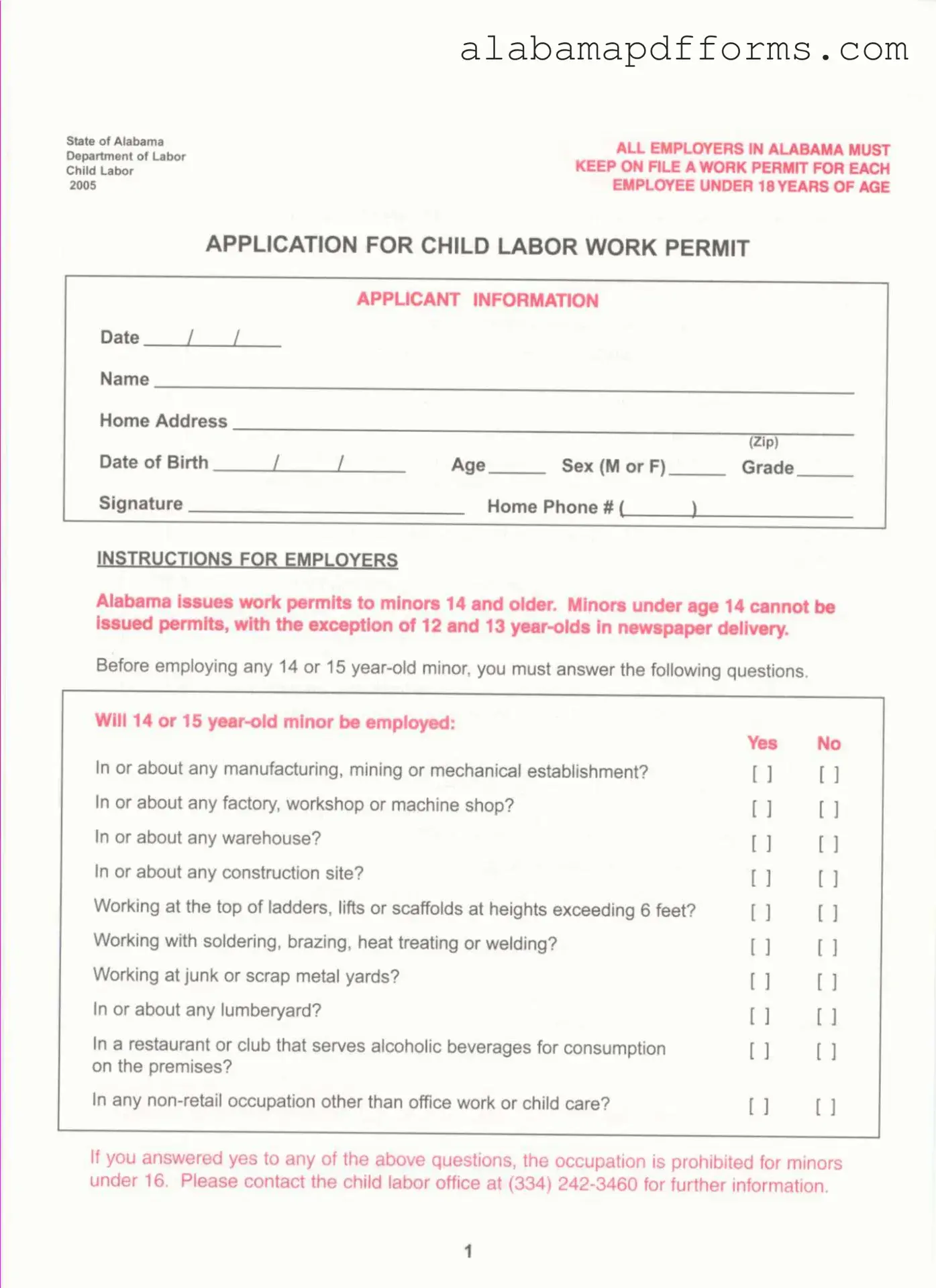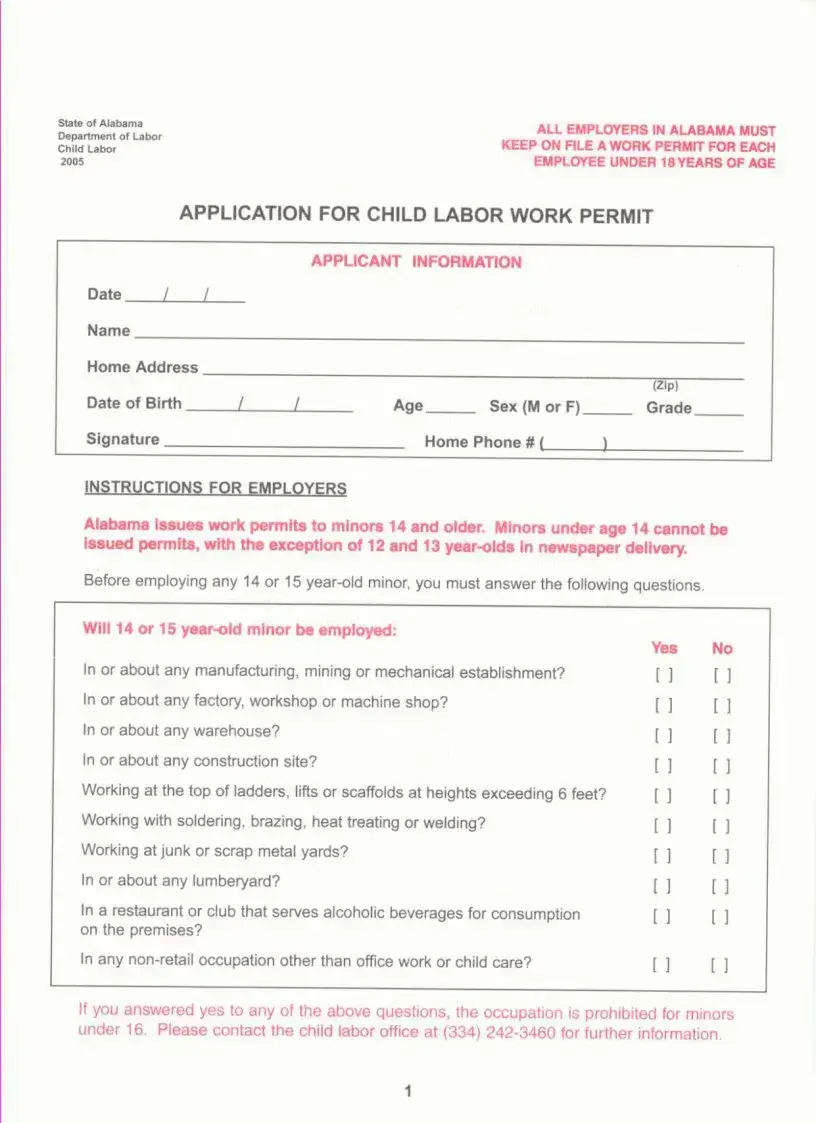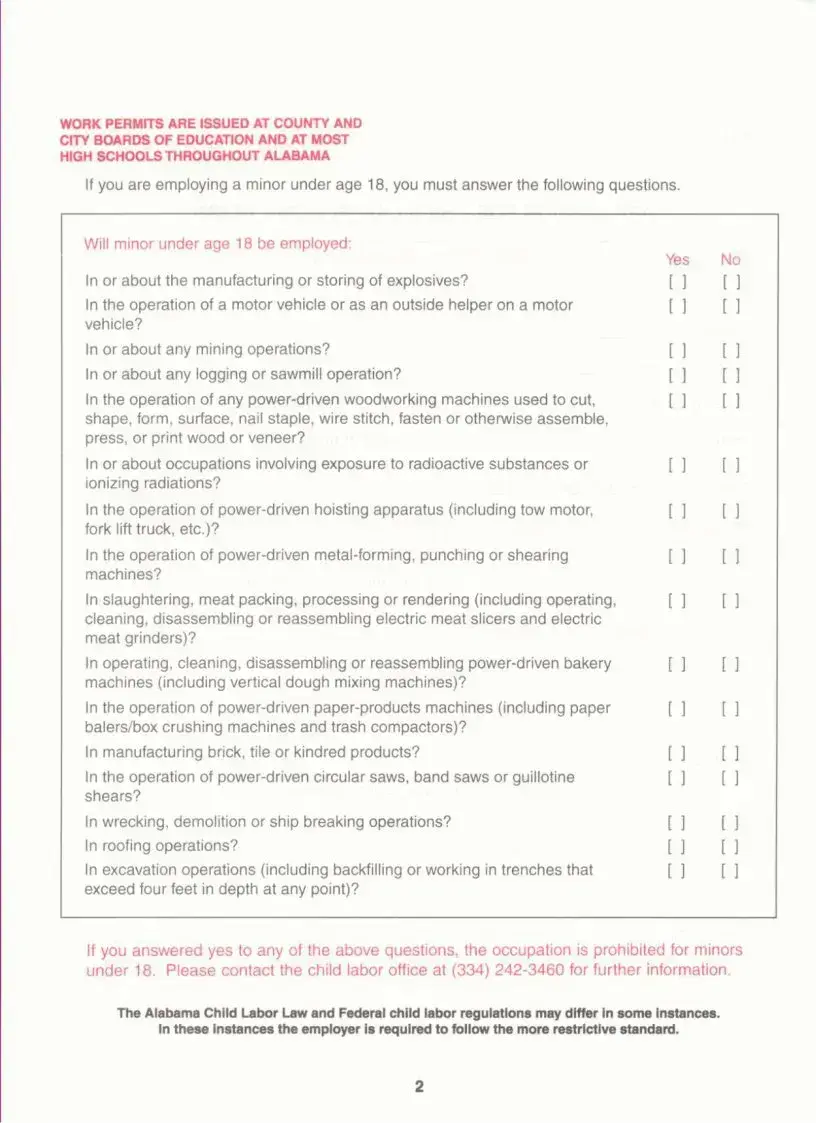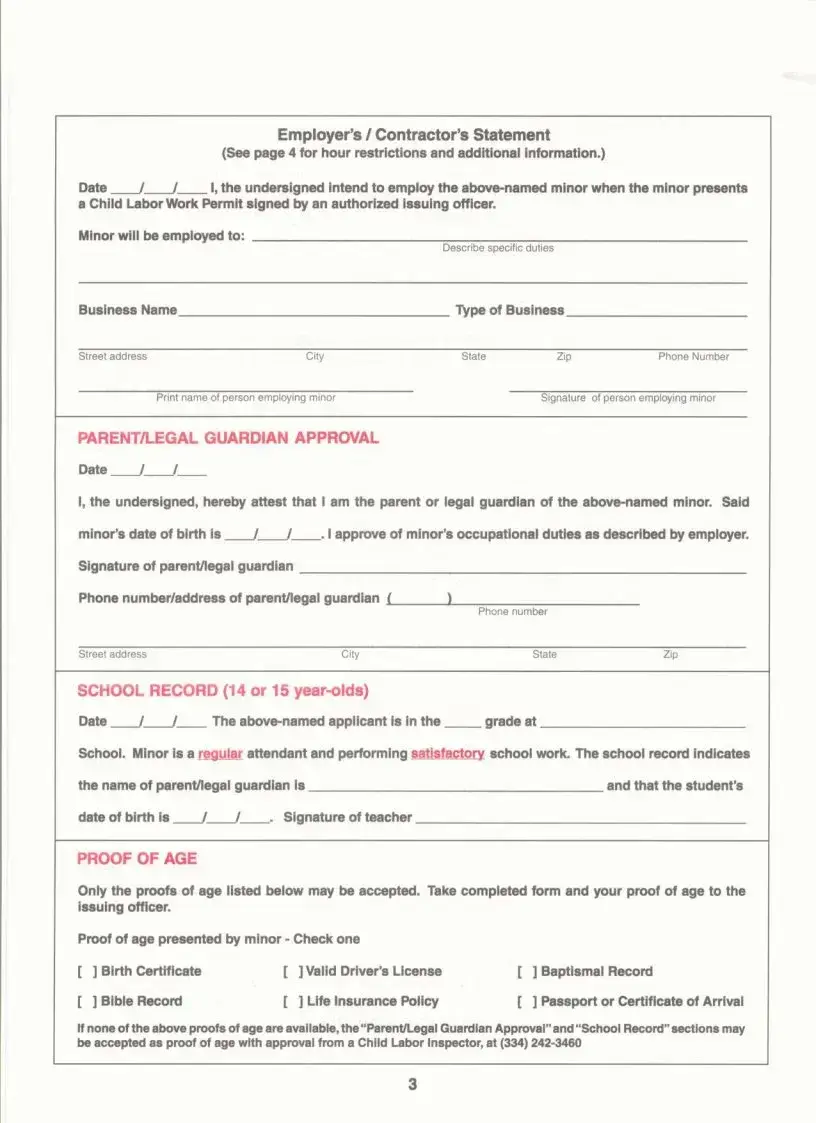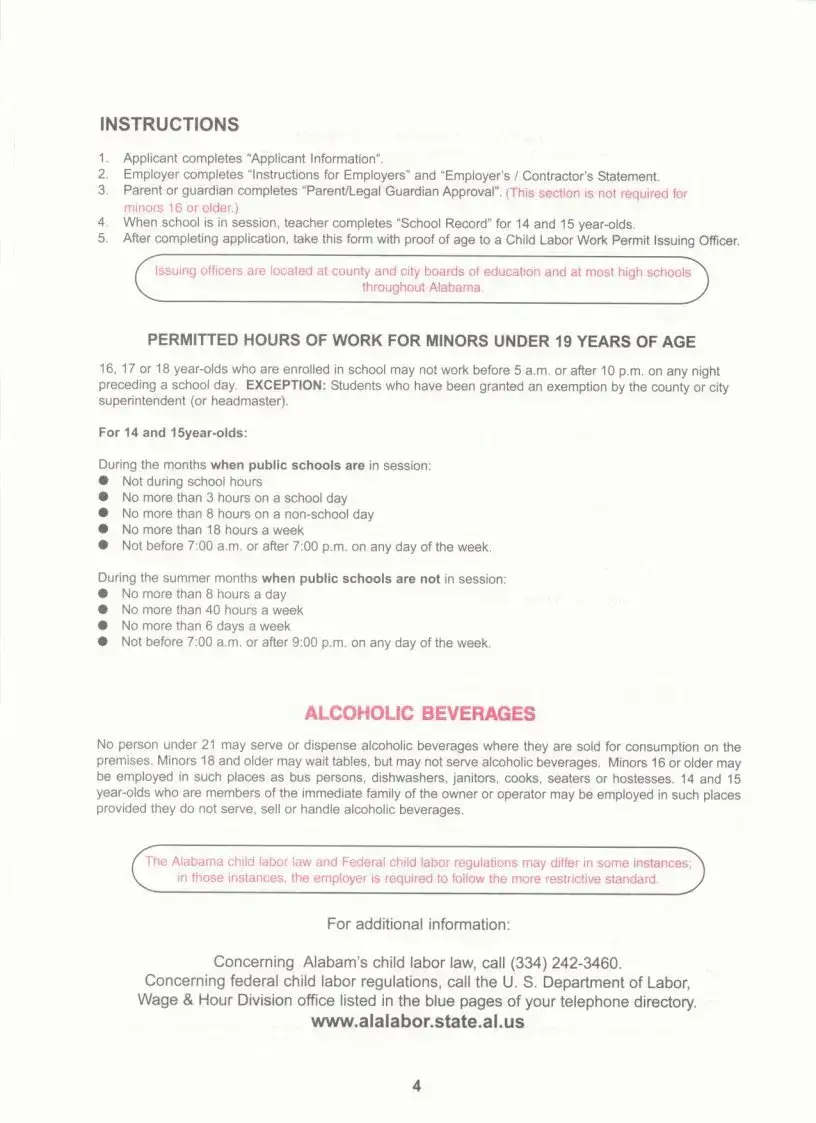Completing the Work Permit Alabama form is an important step for employers hiring minors. However, several common mistakes can lead to delays or complications. Understanding these pitfalls can help ensure a smoother application process.
One frequent error is failing to provide complete applicant information. It is crucial to fill out all sections, including the minor's name, address, date of birth, and signature. Omitting any of this information can result in the application being returned or delayed, causing unnecessary stress for both the employer and the minor.
Another mistake involves inaccurate age verification. The form requires proof of age through specific documents, such as a birth certificate or valid driver's license. If the applicant does not present the correct documentation, the issuing officer may reject the application. It’s essential to double-check that the proof of age is one of the accepted forms listed on the application.
Additionally, not answering the employer questions correctly can lead to issues. Employers must carefully consider the nature of the work being offered. If a minor is being hired for a job that falls under prohibited categories, the application will not be approved. Employers should familiarize themselves with the restrictions on minor employment to avoid inadvertently selecting a disallowed occupation.
Another common oversight is neglecting parental consent. For minors under 16, the form requires a signature from a parent or legal guardian. If this section is left blank, the application cannot proceed. Ensuring that this consent is obtained ahead of time can save time and prevent delays.
Furthermore, incomplete school records can hinder the process for applicants aged 14 or 15. The school record section must be filled out by a teacher, confirming the minor's attendance and satisfactory performance. If this part is not completed, it may lead to rejection of the application.
Lastly, not following the submission process can create unnecessary obstacles. After filling out the form, it must be taken to a Child Labor Work Permit Issuing Officer, typically located at local boards of education or high schools. Failing to submit the application to the correct location can result in delays. Knowing where to go and what to bring can help streamline the process.
By being aware of these common mistakes, employers can navigate the Work Permit Alabama form more effectively. Taking the time to ensure accuracy and completeness will help facilitate a smoother experience for everyone involved.
